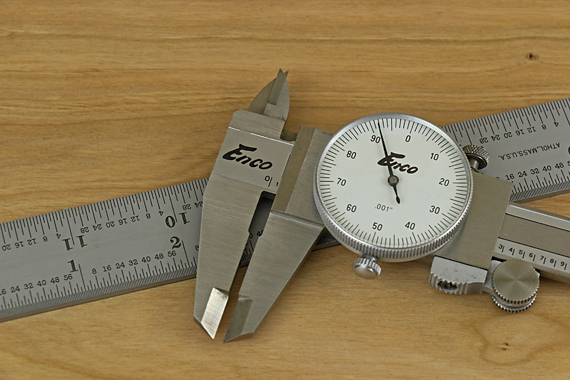
Perfection. We might think we want it in our woodworking, yet it does not exist. But for the craftsperson, concern with perfection, far from being a benign wish, has a dark side – it can distract you from understanding excellence.
Consider the example of a simple straight line, such as the straight edge on a board. You may think you are at least trying to plane that edge “perfectly” straight. Upon inevitably failing, you say, “OK, I’ll try again,” this time harder and more carefully.
But where is the end point? It certainly is not perfection. You have failed in that pursuit, and you always will. The perfect becomes the enemy of even the good as hesitancy, frustration, or obsessiveness creep in. Continuing this way will retard your growth in the craft.
There is a better way. It is to understand and pursue excellence. There is a range of excellence, and you ought to recognize when you achieving within it. It is also important to accept when you have fallen short – of excellence, not perfection – and then take realistic corrective action.
So, that straight edge is not, in fact, ever perfectly straight but instead has a trace of concavity along its length because you know any convexity would result, for example, in an inferior edge joint. Excellence in this case is understanding an appropriate range of camber, and being able to reliably produce and assess it.
The same principle can be applied to nearly every critical process in woodworking.
One of the worst manifestations of the perfection delusion is the “perfect every time” come-on used by tool marketers and, particularly regrettably, in some instructional materials. A woodworker who then inevitably achieves something less than perfect is apt to incorrectly suppose that he did something wrong, or doubt his capability.
Awaiting perfection, your work is never finished, or maybe never again attempted. Better to work toward excellence. Certainly, distinguish it from mediocre. That is the realistic and hard work required in the real world of craft.


This is the same thing I practice and preach to anyone that has ever worked with me. There is no such thing as perfection when it come to woodworking. If you want perfection then I would probably say working with metal and using precision tools might be a better fit. I can’t tell you how many customers tell me they love the little visible inconsistencies. It shows that each piece is built by hand.
On a side note your blog is awesome. I just came across yours today and am glad I did. You have a ton of useful info and is very well written. Thank you and keep up the great work!!!
Thanks for the kind words, Greg, especially with the weight of your more than forty years in woodworking.
Rob
You nailed it again…no pun intended.
Thanks, Ryan.
Rob